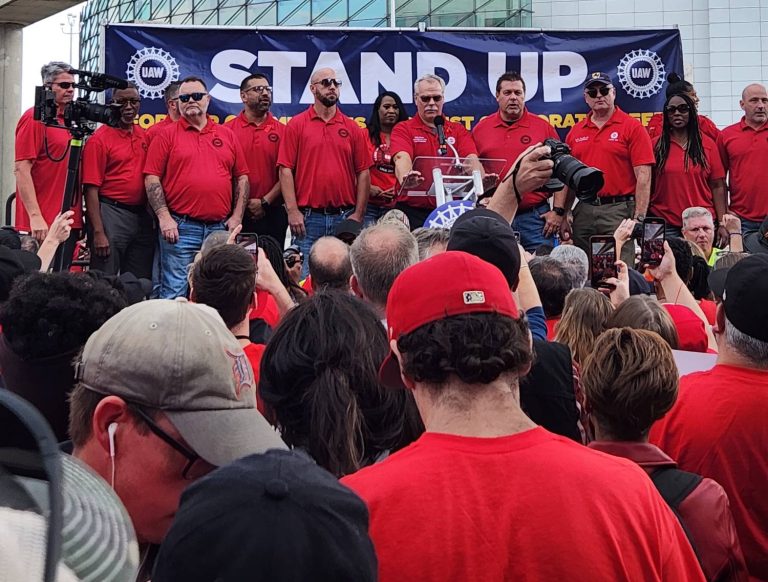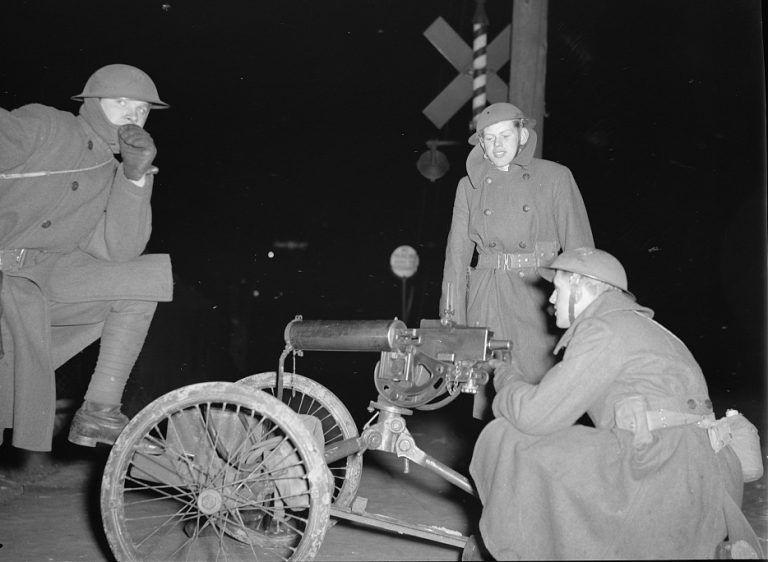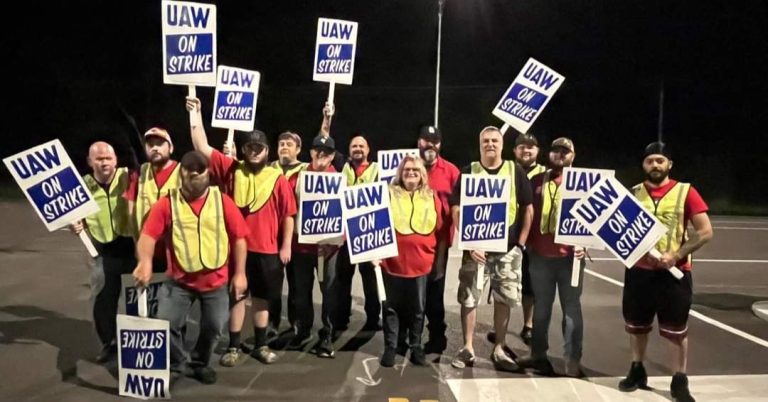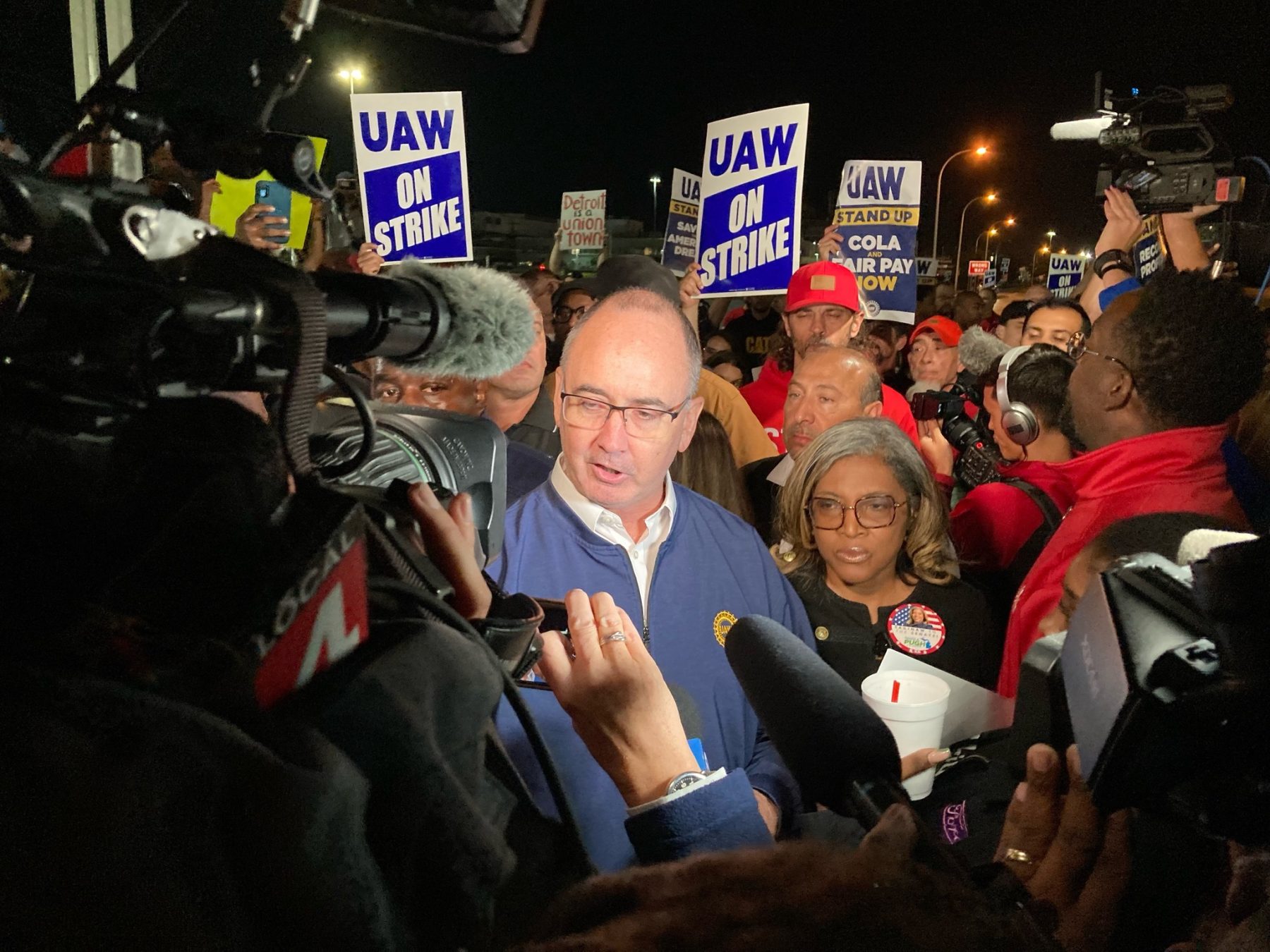In our recent article on the UAW contract battle, we said that this would be a big test for Shawn Fain and the new UAW leadership. We explained that the key question would be whether the new UAW leaders would try to lead a struggle within the limits of what is acceptable to the capitalist system, or whether they would challenge the very system that demands poor wages and conditions. The Flint Sit-Down strike of 1936–37 and other class-struggle plant occupations threw down the gauntlet to the employers: Who really runs the factory—the workers or the owners?
[Originally published at socialistrevolution.org]
Since our article was published, the UAW has gone on a limited strike, with Brother Fain himself launching what he claimed would be this generation’s answer to the sit-down strike tactic of the 1930s: a “stand up strike.” At 12:01 a.m. Friday, September 15, 2023, the UAW struck three plants, one for each of the Big Three: Wentzville (GM) in Missouri; Toledo, Ohio (Stellantis); and the Michigan Assembly Plant (Ford). These three strikes involve around 12,700 workers, less than 10% of the UAW autoworkers’ membership.
Keep them guessing?
President Fain has said that rather than having all the autoworkers go on strike, the union leaders would choose which particular plants would go on strike at any given time. He claims that this would keep the Big Three guessing which plants would be next.
We think this tactic has many serious weaknesses. For starters, maybe the Big Three might not know exactly what is going on, but many UAW members are left confused as well. There are times where the element of surprise can help win a battle, but is this such an example? When your own forces are disoriented, it can only hurt morale and weaken resolve.
 So far, the “stand-up strike” involves less than 10% of the UAW autoworkers’ membership / Image: UAW, Facebook
So far, the “stand-up strike” involves less than 10% of the UAW autoworkers’ membership / Image: UAW, Facebook
Second, the only way to win a strike is to shut down production. This is the only way to stop the capitalists from reaping new surplus value, which is where profits originate. If the entire UAW went out on strike, the workers would be clear about what they are doing and would create a real sense of solidarity. By shutting down all production, the bosses would be prevented from stockpiling inventory, which they can use to outlast workers in a longer strike. With the limited strike scope of the “Stand Up,” the Big Three can keep production going and build up inventory while only three plants are down.
Finally, winning a strike depends on building the maximum unity of the workers. This is the power of the union! If some plants are on strike and others are not, the bosses will exploit the potential division within the workforce. Some workers are getting their full paycheck, plus overtime, while others are getting only strike pay.
Remember, 97% of UAW members voted to authorize a strike. With a powerful proletarian army primed and ready to go into battle, why only send in a few battalions at a time? Far better to let everyone know exactly what’s going on—a total shutdown of production—than to “keep them guessing.”
There is an alternative for the UAW leadership
The autoworkers can win a convincing victory, but they should not take this struggle lightly. The last decades show that the American capitalist class will not surrender unless confronted by a working class flexing its real power. The economic laws of the capitalist system demand that the bosses press workers to work more for less—it is not a choice, it is just the way this system works. The Flint strike in the 1930s was conducted by workers determined to beat the class enemy against all odds. They faced down armed police, company thugs, and the National Guard.
 The Flint strikers in the 1930s were determined to beat the class enemy against all odds. They faced down armed police, company thugs, and the National Guard / Image: Sheldon Dick, Library of Congress
The Flint strikers in the 1930s were determined to beat the class enemy against all odds. They faced down armed police, company thugs, and the National Guard / Image: Sheldon Dick, Library of Congress
The UAW can shut down all of the operations of the Big Three. They can also appeal to the broader working class and the labor movement as a whole for help in this battle. They can spread the struggle to nonunion parts of the auto industry, saying that if they organize with the UAW, they can also get pensions, higher wages, and better working conditions as well. Mass pickets and demonstrations can be organized with other striking workers: The Writers Guild, SAG-AFTRA, Amazon, Starbucks and many others.
The UAW can also publicly state that, not only will they refuse to be intimidated by anti-union laws, but if any of these laws are used against them, they will call and organize a national meeting of the labor movement to run independent labor candidates in the elections next year. This would completely change politics in the US. Independent labor would organize workers to fight against both the Democrats and Republicans, who are extremely unpopular but have no real competition.
No help coming from Biden or Trump
With an election year approaching, both major parties are cynically weighing in to win votes.
Biden, who has anointed himself “most pro-union president in American history,” has declined to endorse the strike. Instead, he issued mealy-mouthed hopes for a “win-win” settlement and legalistically worded concessions to the autoworkers’ “right” to strike. One might wonder where that “right” was when he and the Democrats illegalized a looming railroad strike last year. Far from moving against the bosses, he and the rest of his party use their control of the government to force strikers back to work and defeat any attempt by workers to cut into corporate profits.
Trump, on the other hand, warns autoworkers that striking to force improved wages and benefits from the Big Three will simply lead to their plants closing and production moving abroad to exploit cheaper sources of labor power. Trump’s message to autoworkers is clear: stop fighting, take whatever the companies give you, and just be grateful it’s not worse.
Where is the political leadership that fully supports efforts by workers to defend our livelihoods against the race to the bottom forced by the crisis of the system? That party has yet to be built, but all the necessary prerequisites are already there.
A historic opportunity
 Biden, who has anointed himself “most pro-union president in American history,” has declined to endorse the strike / Image: UAW, Facebook
Biden, who has anointed himself “most pro-union president in American history,” has declined to endorse the strike / Image: UAW, Facebook
Small groups of communist and socialist workers came together to build the UAW against all odds a century ago, and they succeeded. Workers are in a far stronger position today to organize our collective power than our predecessors were in the 1930s. What is lacking is a bold and decisive class-struggle leadership. More than words, the workers need decisive leadership committed to class-struggle tactics that hit the only place that really hurts the bosses—their pocketbooks.
The UAW leaders have a historic opportunity in front of them. A UAW victory would send shockwaves through the labor movement. All workers who recognize this opportunity and wish to seize it must organize together, and we invite you to join the communists of the IMT to help us bring these ideas into the labor movement.

